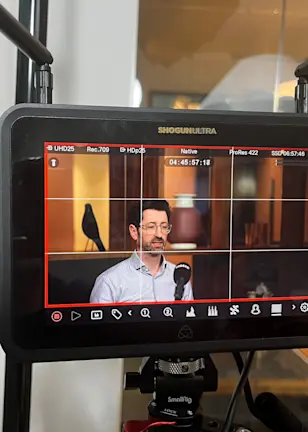In a world that is growing increasingly complex, there is great value in having multiple data sources and methodologies to deepen investors’ perspectives.
Furthermore, the approach and architecture underpinning it all need to be flexible and scalable, to accommodate growth, changes in regulatory requirements and – importantly – to cater to each client’s specific needs.
Viewed more broadly, the ability to source, manage and optimize data and tooling is rapidly expanding in importance in the asset management industry, and is now a key driver of competitive strength.
Handling more and more data
“There is a surge in the volume of sustainability-related data, from a variety of sources,” says Erik van Leeuwen, Robeco’s Chief Operations Investments. “This is good news for investors. Analysts and portfolio managers need to have multiple views on different ESG and sustainability angles. Access to different data providers and perspectives can help to enrich these investment views. While some data vendors have a values-based approach, for example, others take financial materiality into consideration; some give best-in-class rankings while others generate absolute ratings.”
Access to multiple data sources on sustainability-related topics is all the more relevant for areas where standardized reporting and standards are not yet available or are still being developed.
Climate-related data is a case in point. “Several companies started reporting on their carbon footprint about twenty years ago and the data quality and coverage have improved over the years. But we're not there yet. So, having multiple data providers can help you in assessing the quality of the different vendors, screen out the outliers and improve the data quality. Moreover, we see our clients often have their own preferred provider and we need to be able to service these needs.”
He believes this is even more applicable in areas like biodiversity, where data reporting and standards still need to be defined. “In fact, you cannot rely on data vendors in these new areas. It comes down to using different types of data to create your own frameworks and scores, to inform your investment views.”
Transforming the data into valuable, investable insights
Van Leeuwen emphasizes that the data itself is not the ultimate objective. “There’s a lot of data, but in the end it's how you translate the data into forward-looking information.”
The Robeco SDG Framework is an example of how this is done. It is built on economic and sustainable investing principles, with clear key performance indicators to show which companies contribute to or detract from the SDGs. This information is then employed in investment decision-making.
The same applies to our proprietary forward-looking climate scores that are based on companies’ performance relative to their sector decarbonization pathways and our credibility analyses. These forward-looking elements are an important input in the analysts’ and portfolio managers’ issuer-selection decisions.
Maintaining the integrity of the data, tooling and outputs is crucial. “With the ever-increasing need for data, we’ve devoted significant resources over the past five years or so to our data architecture. This is a long-term project that focuses on the capacity, storage, speed and governance of our data. In the end, we want to be sure of the consistency and reliability of the data.”
That includes maintaining clear audit trails throughout the organization for all tooling and methodologies – such as climate scores, SDG scores or screening decisions for ESG-labeled bonds – as well as reporting on these to clients.
This is also a trend that he sees more widely in the industry, with the recognition that success in this area could determine longer-term competitiveness and even survival. “Judging by what we’ve been able to achieve – such as using data from multiple sources in our portfolio construction, implementing new sustainability screening methodologies, applying client-driven restrictions – I believe we have built a solid foundation.”
Creating open access to Robeco’s data
A major next step in Robeco’s data and tooling management capability is in making certain data available to others via its Sustainable Investing Open Access Initiative. Robeco now provides academics, investors and sustainable investing experts access to its SDG Framework and scores.
“The philosophy behind our Open Access Initiative is twofold. We welcome external feedback on the framework, so that we can further improve our intellectual property [IP]. Secondly, we see that clients really want to use this IP for a broader purpose, like reporting on their total book of business, or enhancing the screening of their own portfolios – including portfolios that we do not manage on their behalf.”
Van Leeuwen explains that this process of giving a wider group of stakeholders access to Robeco data and information requires the right set-up and support, so that clients can use the data in ways that are consistent with their particular operational needs. “With the infrastructure we have in place, we’ve been able to deliver on that so far, while we will also look at other distribution methods.”
Effective data management and research-based methodologies to transform data into usable insights is a significant area of focus for investors. Looking to the future, Van Leeuwen expects this focus to remain crucial to enhancing investment results and meeting clients’ and regulators’ sustainability requirements.
This is an extract from a longer publication:
Ontvang de nieuwste inzichten
Meld je aan voor onze nieuwsbrief voor beleggingsupdates en deskundige analyses.


















